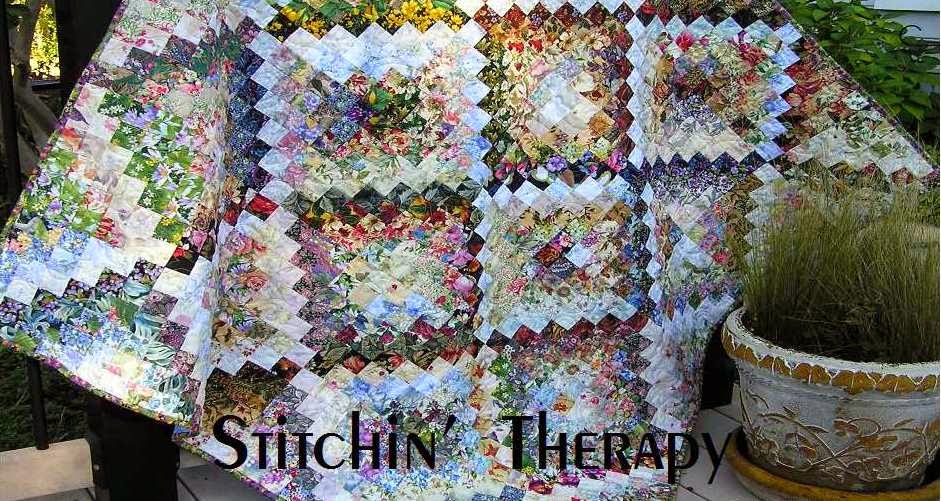Two more questions came about selecting fabrics for a water color quilt and for a blooming 9 patch, which uses the blending technique to achieve a similar effect. For the blooming 9 patch, whether you are using 5, 7, or 9 fabrics, fabric selection is important in the beginning. You need light, medium, and dark values in the fabrics that will blend together as you add each row outward. So here are a few photos to show some of the fabrics I use. I will try to give a better explanation of why they work for this technique.
On the right are the "light fabrics". There is more background color---from white to light tan---showing and the design or print is light or faint looking. Note the low contrast between the background and the print. These can be hard to find, so when I do discover them, I buy a lot!
Update note: Janet reminded me that often the backside of a fabric will work for a light. When you have a difficult time finding the right fabric, flip it over and see what the back side looks like. It could be just what you need! Thanks, Janet.
On the left, are some light medium fabrics. Again, the background is light, but the print is stronger and has more contrast with the background. The one on the far left is a great example of a "sprigged" print. A 2" square of this one can blend into a very light area like a sprig the extends from a branch of a tree.
The above photo are a collection of medium fabrics. These are the work horses in watercolor.....they often bridge from a lighter area to a darker one....as well as being the most used. The background may range from light to darker cream, or tan....maybe a light green even. The design is darker and in good contrast with the background. Usually there is less background that shows, making them "closer packed".
And the dark fabrics......give the watercolor depth and life. The background color is dark.....black, brown, blue, green.....and the design has strong contrast. The areas of light and dark on the dark background provide the way to blend and merge the squares for a water color.
 I talk so much about the right fabric, I thought I should also mention the wrong ones. These are great fabrics, they just don't work well for blending in a watercolor. Why? Mainly because they are one or two color fabrics. Either they "read" as a solid or a polka dot from a distance. Step back from the computer and look at them again. The second fabric---purple paisley---fooled me when I bought it. I thought it would work, but just does not blend well because the design is so evenly spaced. So save these fabrics for another project or turn them into backings. Thanks for the questions, hope this will help with your fabric selection for a watercolor project.
I talk so much about the right fabric, I thought I should also mention the wrong ones. These are great fabrics, they just don't work well for blending in a watercolor. Why? Mainly because they are one or two color fabrics. Either they "read" as a solid or a polka dot from a distance. Step back from the computer and look at them again. The second fabric---purple paisley---fooled me when I bought it. I thought it would work, but just does not blend well because the design is so evenly spaced. So save these fabrics for another project or turn them into backings. Thanks for the questions, hope this will help with your fabric selection for a watercolor project. 



7 comments:
Another great post Debbie - full of interesting information, thanks.
I agree ! I always wanted to make a watercolor quilt but think it's very hard :(
Do you buy stash especially for these quilts?
Just a wonderful post. Color and fabric selection for a watercolor is so different than color selection for a 'block' quilt.
Oh, I recall the hours spent shopping for "just the right floral" when my Mom was making a watercolor quilt. She ended up using the back side of some of the prints for "lights".
I keep reading about your watercolor quilts & have gleaned a ton of info from you. I will try another one "someday" but for now I am going to just drool over the ones you make.
Thanks for sharing your information with us & encouraging each of us to try new things.
Great information. I sure wish we lived closer...I would love to go fabric shopping with you.
Hi, Debbie. Very interesting post. I tend toward solids with some prints, but nothing so extensive as your collection. Wow, gorgeous fabrics you have! I especially liked the butterfly and ladybug fabric.
best, nadia
Post a Comment